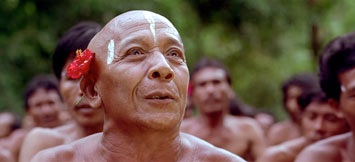Sometimes people hear me say things twice. And sometimes they hear me say things that, to them, seem obvious. And sometimes - just sometimes - people feel they hear from me just a little more than they figured they would. But rarely do people say to me, “I wish you would have told me that.”
I tend to over-communicate. By over-communicate I mean that I make a habit out of forwarding to anyone who is part of my network any information that I feel they may find useful. For instance, I may send an email to the DMS photographers informing them of a new camera product that I discovered. Or I might send a potential client a link to a blog article I recently read involving their industry. I’m fully aware that the people I send this information to are likely already up-to-speed on what I’m sending them. In fact, they probably have knowledge well beyond my findings. But, occasionally, my over-communication proves invaluable.
The benefits of over-communicating are many. I can think of several times a client has been extremely grateful to me for sharing a bit of information they otherwise would have missed out on - or simply overlooked or forgot. Sometimes clients simply appreciate the fact that I’m thinking of them and their concerns. Potential clients to whom I’ve sent a bit of information are often impressed enough with my basic interest and understanding of their industry that it encourages them to speak with me further. Sometimes just a bit of follow-up information to a previous discussion has been just what was needed to get a client and me on the same page. And let’s not forget the tried-and-true benefits of regular communication with clients in order to retain their loyalty. Rest assured that your competitors are contacting your clients; don’t let yourself be forgotten.
Employees, co-workers and contractors benefit from over communication, too. These individuals are experts in their fields and may be hesitant to admit they sometimes don’t know all they need to about a situation, product or procedure. If I can sense that I may have a piece of information worth sharing with them, I find a way to do so (without coming across condescending). Sometimes, just admitting that I’m not sure how to do something encourages an employee or co-worker to be more forthcoming about their knowledge (or lack of). And I’m always truthful with a client in letting them know if I don’t have an immediate answer to their question (but guarantee them that I’ll get one). To me, it’s not a problem that someone doesn’t know how to do something. What becomes a problem is when a lack of communication creates assumptions that something is going to be handled correctly and the result is a mismanaged task. It’s gut-wrenching to find out that had someone just shared a bit of information, a problem could have been avoided.
As you might imagine, over-communication can be beneficial in personal relationships, too. Whether it’s at home, at school, at a social gathering or at a community event, keeping lines of communication open and being clear about what people can expect from you and what expect from them can help to avoid problems down the road. And while you might be hesitant to initiate such discussions - especially at the beginning of a relationship - in fear of creating an uncomfortable situation, the respect and appreciation that clients, associates and friends show you for your willingness to communicate will far outweigh any moment of uneasiness. Besides, communications don’t have to be uncomfortable - be professional and courteous and your intentions will show through.
In summary, unless you already label yourself as an over-communicator, consider increasing your level of communication to your clients, potential clients, employees, associates, peers, friends and family. The benefits of always knowing that the sharing of knowledge between you and your network is never lacking not only promotes an atmosphere of trust and honesty but guarantees a more mistake-proof environment for you to work and live.















